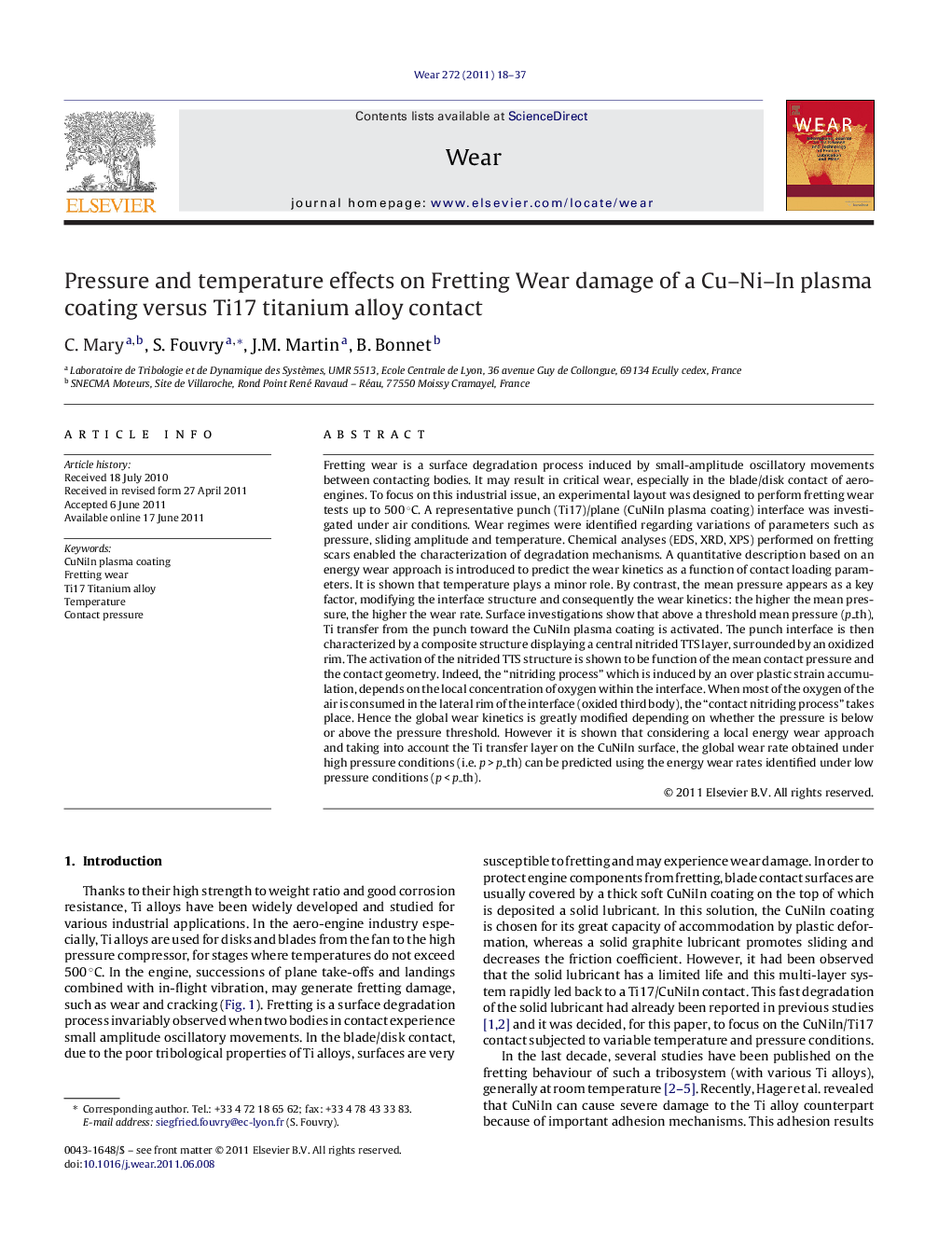| Article ID | Journal | Published Year | Pages | File Type |
|---|---|---|---|---|
| 618012 | Wear | 2011 | 20 Pages |
Fretting wear is a surface degradation process induced by small-amplitude oscillatory movements between contacting bodies. It may result in critical wear, especially in the blade/disk contact of aero-engines. To focus on this industrial issue, an experimental layout was designed to perform fretting wear tests up to 500 °C. A representative punch (Ti17)/plane (CuNiIn plasma coating) interface was investigated under air conditions. Wear regimes were identified regarding variations of parameters such as pressure, sliding amplitude and temperature. Chemical analyses (EDS, XRD, XPS) performed on fretting scars enabled the characterization of degradation mechanisms. A quantitative description based on an energy wear approach is introduced to predict the wear kinetics as a function of contact loading parameters. It is shown that temperature plays a minor role. By contrast, the mean pressure appears as a key factor, modifying the interface structure and consequently the wear kinetics: the higher the mean pressure, the higher the wear rate. Surface investigations show that above a threshold mean pressure (p_th), Ti transfer from the punch toward the CuNiIn plasma coating is activated. The punch interface is then characterized by a composite structure displaying a central nitrided TTS layer, surrounded by an oxidized rim. The activation of the nitrided TTS structure is shown to be function of the mean contact pressure and the contact geometry. Indeed, the “nitriding process” which is induced by an over plastic strain accumulation, depends on the local concentration of oxygen within the interface. When most of the oxygen of the air is consumed in the lateral rim of the interface (oxided third body), the “contact nitriding process” takes place. Hence the global wear kinetics is greatly modified depending on whether the pressure is below or above the pressure threshold. However it is shown that considering a local energy wear approach and taking into account the Ti transfer layer on the CuNiIn surface, the global wear rate obtained under high pressure conditions (i.e. p > p_th) can be predicted using the energy wear rates identified under low pressure conditions (p < p_th).
Graphical abstract.Figure optionsDownload full-size imageDownload high-quality image (208 K)Download as PowerPoint slideHighlights► Fretting wear response of a Cu–Ni–In plasma/Ti17 interface as a function of contact pressure and temperatures (<450 °C) is investigated. ► If temperature does not modifies the wear response, pressure highly influences the interface behaviour. ► Below a 85 MPa threshold contact pressure a low wear rate is observed characterized by a abrasion processes. ► Above the threshold pressure, higher wear rates, involving transfer phenomena, tribologically transformed structures and nitriding phenomena are observed. ► A “composite” energy wear approach is derived to formalize the two low and high wear rate regimes.
